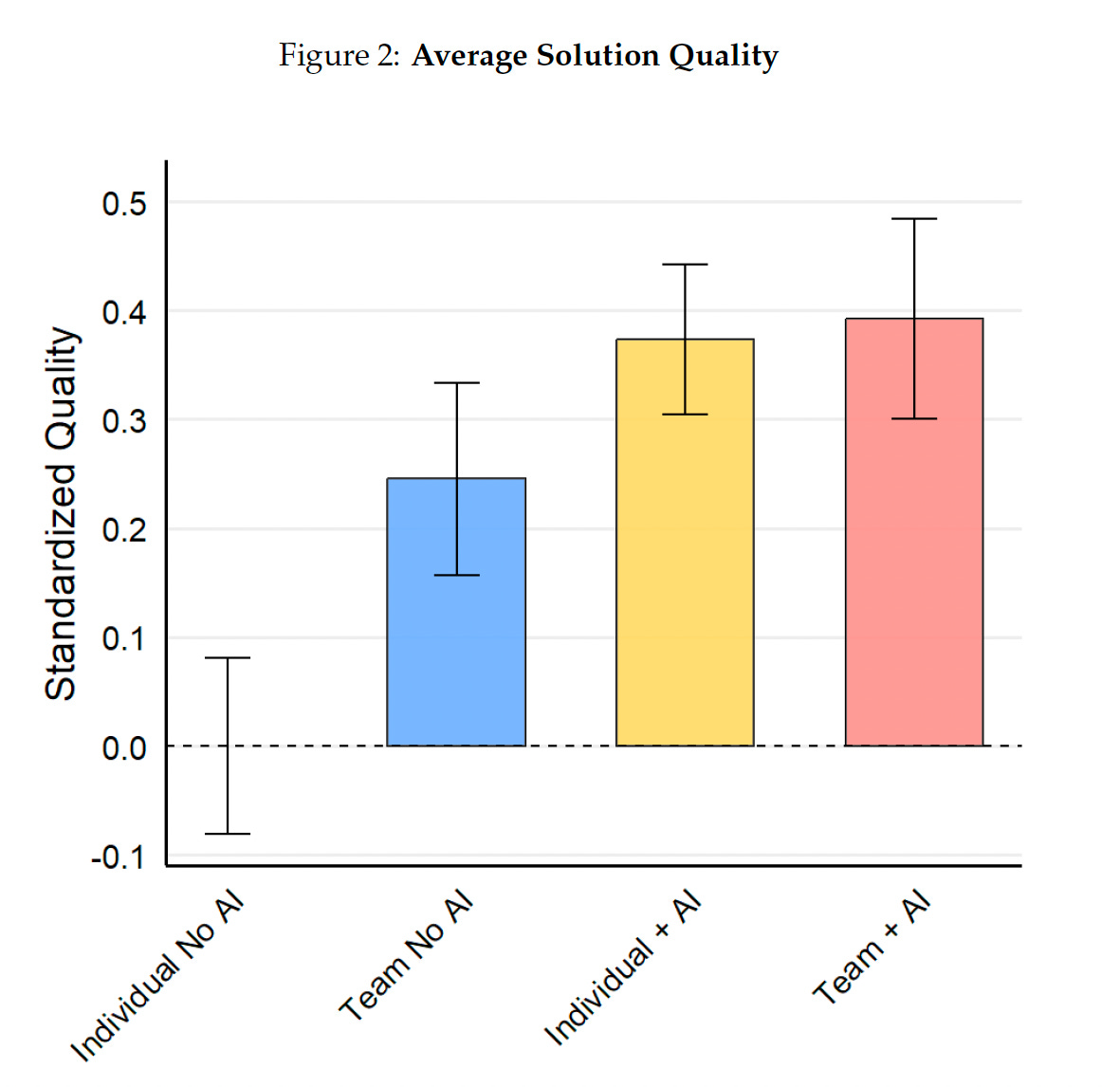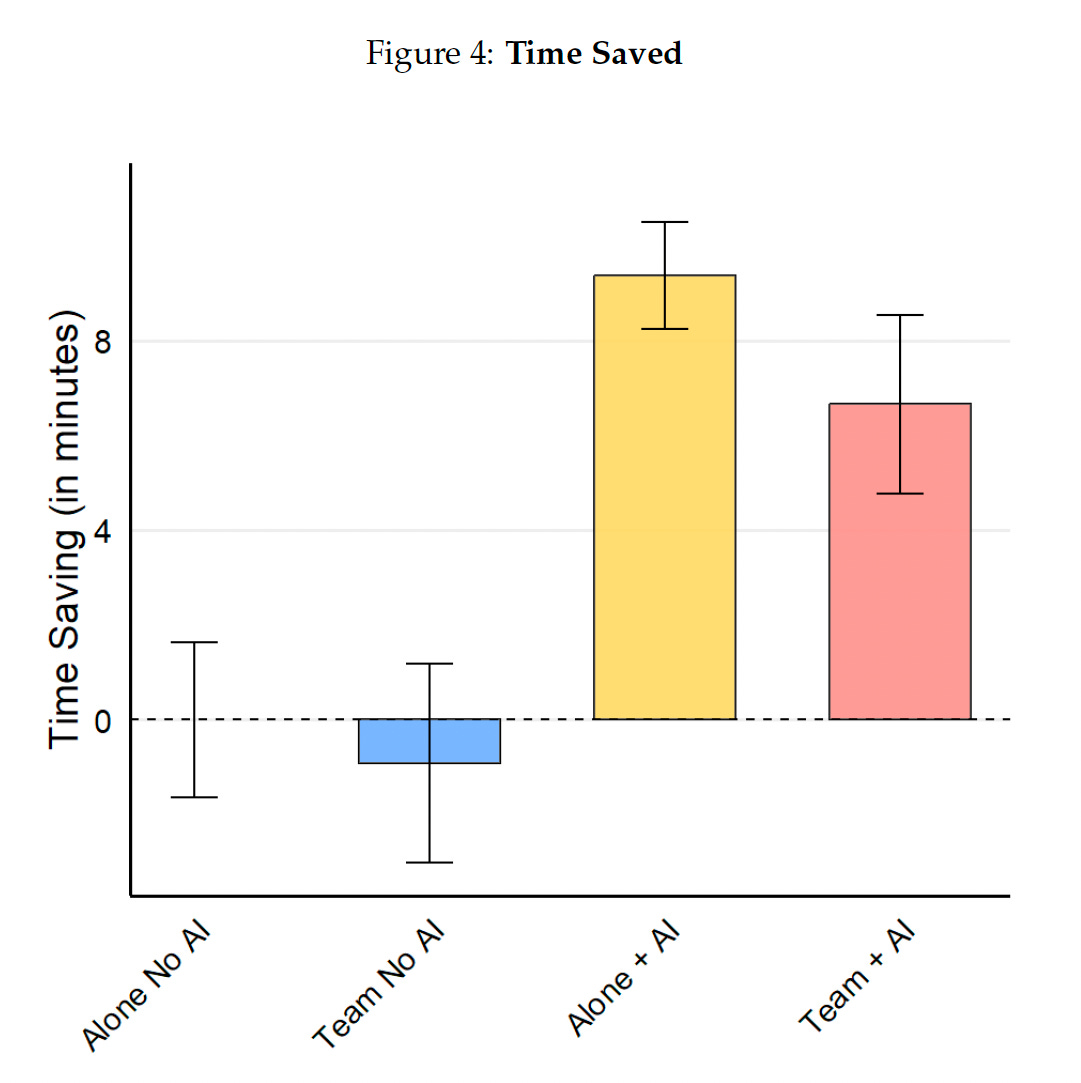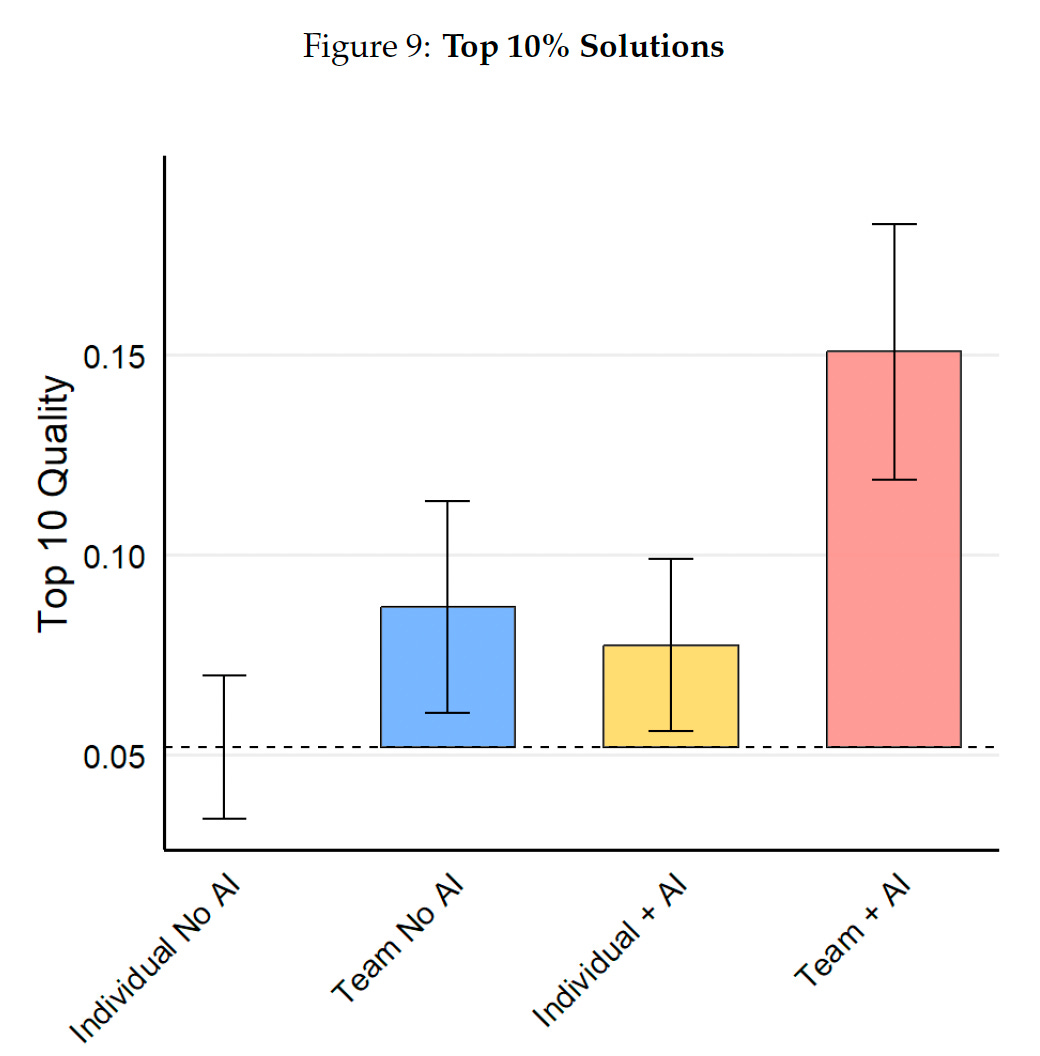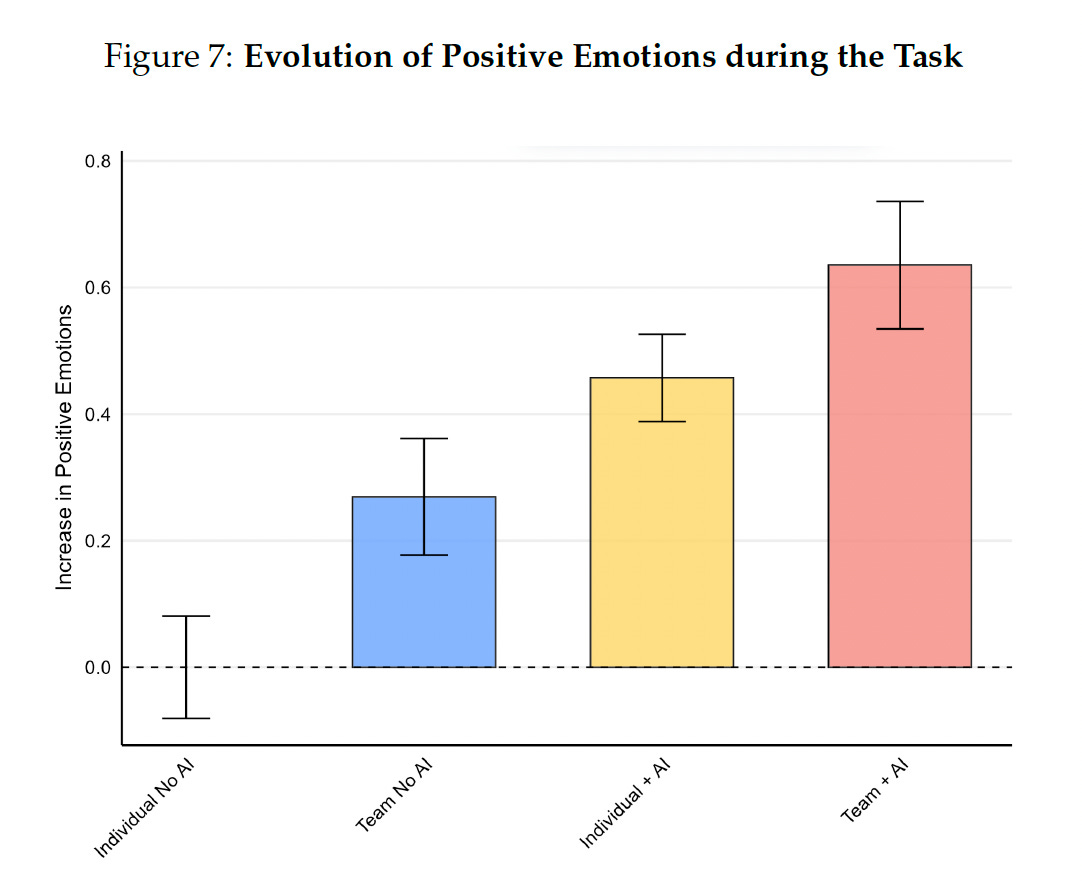When AI joins the team: rethinking creativity, collaboration, and the future of work
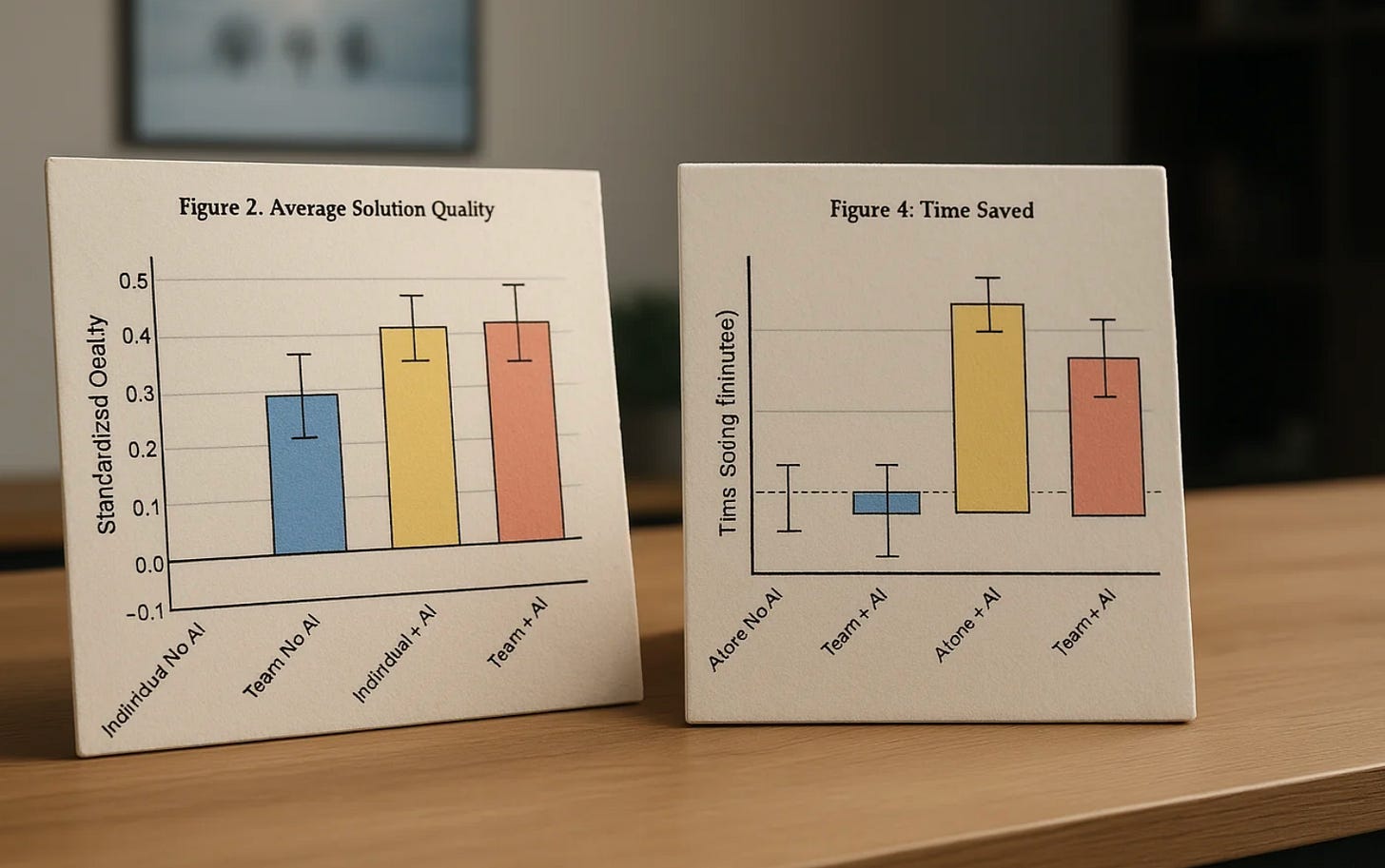
What if your most collaborative, cross-functional, tireless colleague wasn’t human? And actually made you feel better after a brainstorming session?
On March 21, 2025, Harvard Business School released a major new working paper on AI and teamwork called “The Cybernetic Teammate: A Field Experiment on Generative AI Reshaping Teamwork and Expertise”. Among the contributors is Professor Ethan Mollick — one of the most insightful voices on the future of AI, author of the book Co-Intelligence: Living and Working with AI, and the blog One Useful Thing here on Substack.
Although the study was conducted inside Procter & Gamble — the global consumer goods giant — its implications go far beyond product packaging, detergents and diapers. At its core, this is a study about AI and creativity: how machines are no longer just assisting us, but collaborating with us.
THE STUDY
Between May and July 2024, 776 experienced P&G professionals participated in a large-scale field experiment. Their mission: tackle real product innovation challenges. Participants were split into four groups:
Individuals working without AI
Teams working without AI
Individuals using AI
Teams using AI
The AI used was GPT-4, accessed via Microsoft Azure. Participants in AI conditions received just one hour of prompt training before the task.
RESULTS
The results are clear: AI improves average performance. Teams with AI performed best overall, followed closely by individuals with AI. Then came human-only teams. Lagging behind: individuals without AI.
Not surprisingly, AI was also useful in saving time, both for individuals and teams.
But here’s where things get interesting. Among the top 10% of solutions, human-only teams slightly outperformed AI-enabled individuals — yet AI-powered teams were by far the most likely to generate standout, high-quality ideas. In short, AI amplifies teams. It doesn’t replace them — it enhances them.
And there’s more. Team+AI groups reported the highest levels of positive emotions — enthusiasm, energy, excitement — and significantly lower negative emotions like anxiety or frustration. AI didn’t just help people work better. It made them feel better.
CONCLUSIONS
So what does all this tell us?
First: the fundamentals hold. Teamwork still matters. Human collaboration brings cognitive diversity, richer solutions, and social engagement. That hasn’t changed.
But second: AI is no longer just a tool. It’s beginning to function like a true teammate. It helps individuals think outside their silos, brings structure to ambiguity, and boosts the confidence of those with less experience. In short, it helps people create beyond their job description.
Companies focused solely on AI for efficiency are playing a small game. The real opportunity — and risk — lies in AI’s potential to reshape how creativity and expertise flow through an organization. Because this isn’t just about productivity. It’s about rethinking how we collaborate.
Maybe it’s time we stop calling it Artificial Intelligence. And start calling it what it’s already becoming: Collaborative Intelligence.


